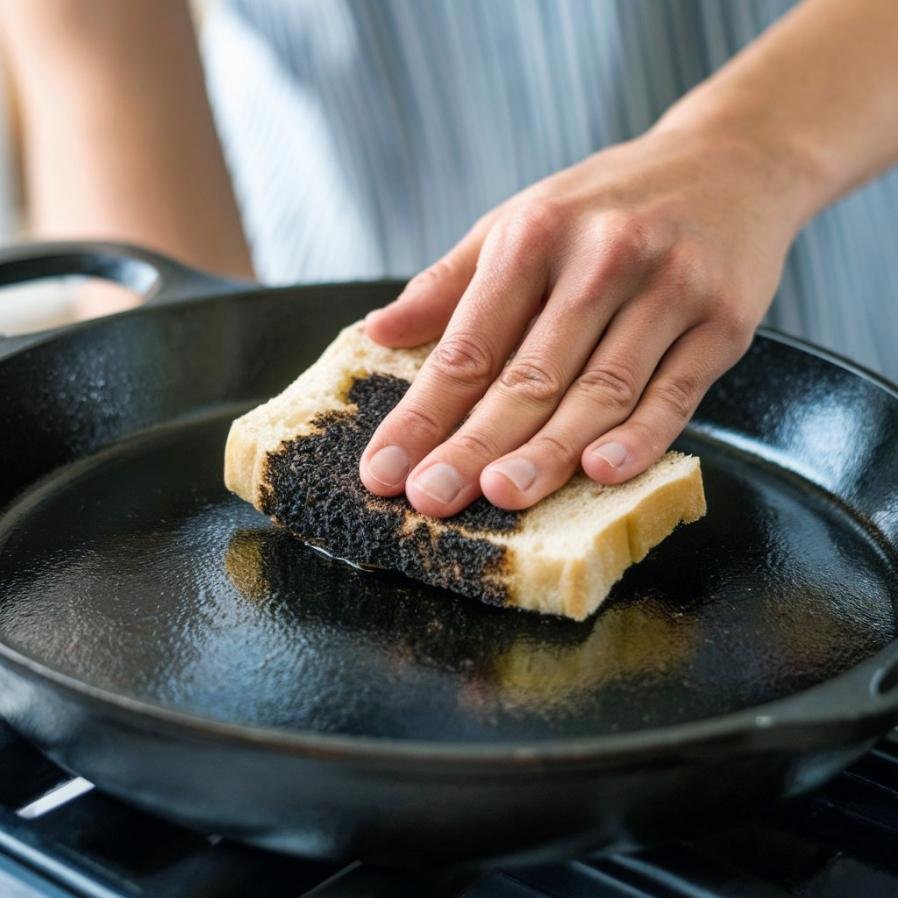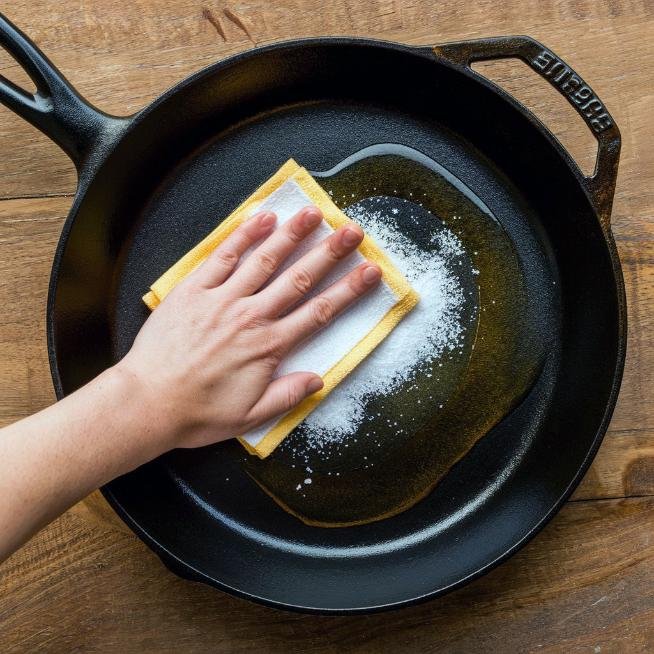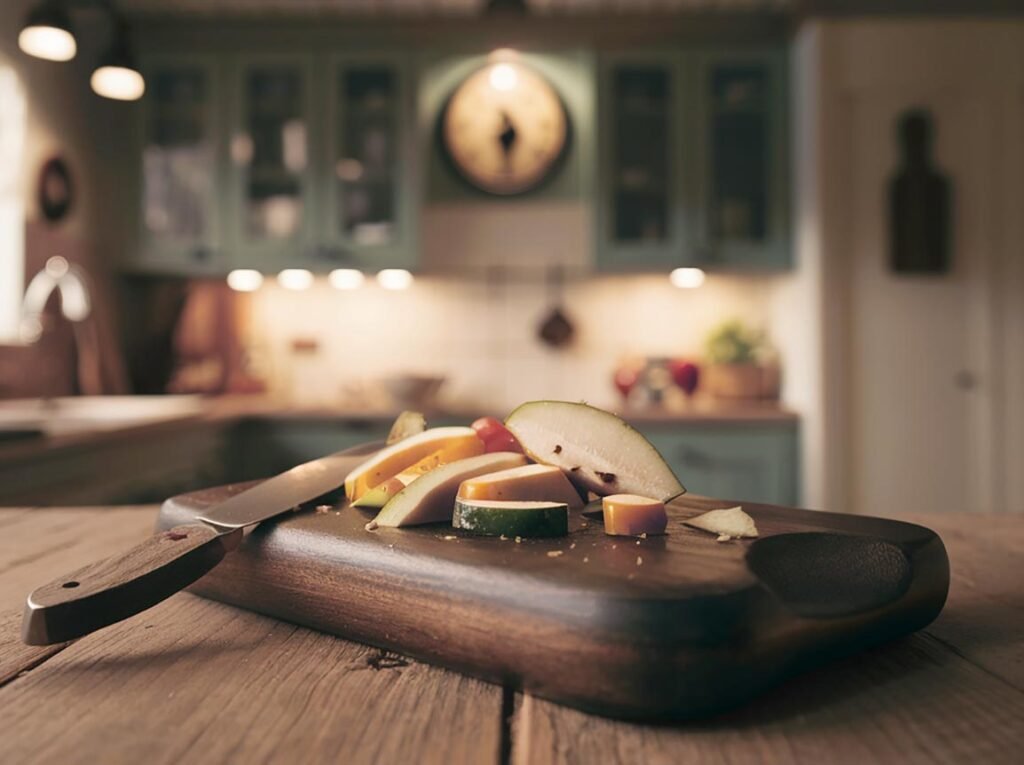
Like me, you enjoy the tough, classic beauty of a sturdy cast-iron skillet. This is a kitchen workhorse that almost always lasts a lifetime. The problem is that cast iron rusts easily, and it will happen regardless of your level of maintenance. Perhaps you accidentally left it in a damp area or forgot to properly dry it after washing. Rust is inevitable at some point, for whatever reason.
Although there are several ways to clean a rusty cast-iron skillet, I recently discovered a shockingly simple, cheap, and quick trick—a $1 hack that works like magic every time! I’ll show you this useful tip in this post, explain why it works, and offer some advice on how to keep your cast-iron skillet in such condition that rust disappears.
Why rust cast-iron skillets?
Understanding why cast-iron skillets rust in the first place will help you better appreciate the cleaning tip. Cast iron is a porous substance, meaning it may absorb moisture. Trapped water reacts with the iron in those pores, causing oxidation, also known as rust. If you don’t frequently care for and season your cast iron, you leave it prone to this rusting process.
Several things can contribute to cast iron rusting:
Improper drying: Water is cast iron’s worst enemy. Failing to fully dry your skillet after washing might trap moisture on the pan’s surface, leading to rust.
Storing in a moist place: If your skillet is stored in a humid or damp environment, rust will develop more quickly.
Not seasoning enough: Seasoning is a protective covering that helps prevent rust. If your skillet isn’t seasoned well enough or if the seasoning goes out, the pan becomes more prone to rust.
Once rust sets in, it’s ugly and might hinder the skillet’s function. However, rust is not the end of the road for cast iron. You don’t need to spend a fortune on fancy cleaning products, and you don’t have to toss them away. Enter my $1 rust-cleaning trick.
The $1 trick: steel wool and baking soda
The key to this ingenious cleaning process rests in two simple, inexpensive items: steel wool and baking soda. You can easily purchase these goods for about a dollar apiece at your local grocery or dollar shop, and they perform miracles when it comes to removing rust.
Here’s how the procedure works:
What You’ll Need:
- Steel wool (fine-grade, preferable)
- Baking soda
- A few drops of vegetable oil (optional)
- Warm water
- A towel or clean rag

Step 1: Scrubbing with steel wool
First, start by collecting a piece of fine-grade steel wool. Steel wool is ideal for removing rust because it’s rough enough to eliminate rust without ruining the skillet’s surface. In small circular motions, scrape the rusty regions of your skillet. If the rust is minimal, you may be able to remove it in only a few minutes. More serious rust may take a little longer, but persevere with it.
Step 2: Create a baking soda paste
Next, take some baking soda and combine it with a little warm water to produce a thick paste. Baking soda is minimally abrasive, which makes it useful for breaking down rust without hurting the iron. It also neutralizes any acids that might have contributed to the rusting process.
Rub this mixture all over the skillet, focusing on any lingering rust spots. Let the paste sit on the skillet for around 10–15 minutes to give it time to work its magic.
Step 3: Rinse and Dry Thoroughly
After the baking soda has had time to act, rinse the skillet with warm water. Make sure to thoroughly dry it with a towel. You want to remove any moisture from the skillet to prevent rust from appearing. For extra assurance, you may even lay the skillet on a low flame on your stovetop for a few minutes to ensure it’s totally dry.
Step 4: Season the skillet
Once your skillet is rust-free, it’s vital to preseason it to restore its protective covering. Rub a tiny amount of vegetable oil (or any neutral cooking oil) all over the surface of the skillet, taking care to coat both the interior and exterior. Then, heat the skillet in the oven at roughly 375°F (190°C) for an hour. This procedure will attach the oil to the skillet, creating a protective layer to help prevent future rust.
Congratulations! Your cast-iron skillet is now as lovely as new, ready to cook.
Why Does This Trick Work?
Steel wool: Cast iron is a sturdy material, and fine-grade steel wool is strong enough to wipe away rust without destroying the pan. Steel wool acts as a buffer to break up the rust particles, allowing you to remove them effectively.

Baking soda: Baking soda’s gentle abrasive properties make it ideal for cleaning rust without harming the iron underneath.
Additionally, baking soda’s chemical structure helps neutralize acids that may have led to the rust formation in the first place, making it a potent and gentle cleaning agent for cast iron.
Together, these components offer an easy, efficient, and economical treatment that leaves your skillet rust-free and ready for its next journey.
Maintenance Tips to Keep rust away
Now that your cast-iron skillet is clean and rust-free, you’ll want to make sure it stays that way. Here are a few suggestions for preserving your skillet and keeping rust at bay:
Dry completely after cleaning: After washing your skillet, dry it immediately with a towel. If possible, place it on a low flame for a few minutes to ensure that no moisture remains in the pan.
Store in a dry place: To prevent moisture buildup, always store your cast iron in a dry position. If you reside in a particularly humid region, consider keeping the skillet with a small packet of silica gel to absorb any extra moisture.
Periodically season your skillet: Seasoning your skillet regularly helps preserve it from rust. After each usage, rub a thin layer of oil over the whole surface of the pan before storing it. The more you cook with your skillet, the more seasoned it will get.
When cooking, use a thin coating of oil. Always use a tiny bit of oil or fat. It improves food flavor and helps your pan retain seasoning.
Avoid soaking in water: Never allow your cast-iron skillet to sit in water for extended periods of time, as this may cause rust. Instead, wash it rapidly with warm water and dry it right away.
Conclusion
Cleaning a rusty cast-iron skillet doesn’t have to be a scary chore, nor does it require expensive tools or fancy cleaning supplies. With just $1 worth of steel wool and baking soda, you can restore your faithful skillet to its former glory. The technique is simple, inexpensive, and very effective. Now that your skillet is rust-free, a little care and regular seasoning will keep it in excellent form for years to come.
So, if you’ve got a rusty cast-iron skillet sitting in the back of your cupboard, don’t despair. Grab some steel wool and baking soda, and get scrubbing! You’ll have your skillet back in operation in no time, and your next meal cooked in cast iron will taste better than ever.



